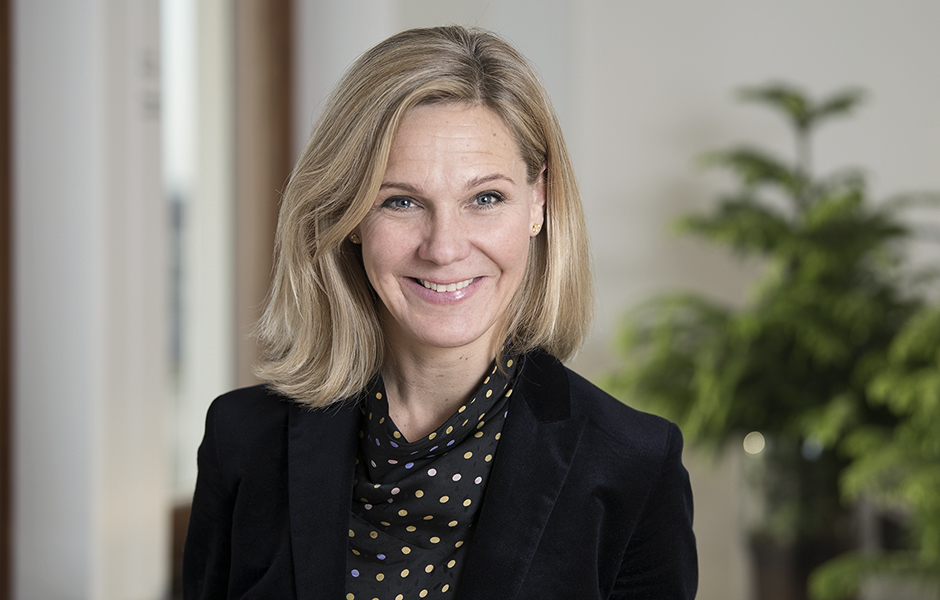How SDG Invest find the most sustainable companies for our portfolio
After we launched SDG Invest in January 2018, a lot of people have been asking me, how we came up with the investment fund SDG Invest and the sustainability score card that we use to select the companies we invest in. They ask me, because some are interested in our products, while others are trying to understand what we do differently compared to regular ESG screenings. I have therefore decided to write about why, what and how we do find the top financial and sustainable companies globally.
First of all, it is important to understand the investment philosophy behind SDG Invest: We invest in listed companies that are addressing global challenges and adapt to a world where they will also be profitable in the future. The United Nation’s Sustainable Development Goals (SDGs) promotes a sustainable world in which all people enjoy peace and prosperity. Companies adapting to and creating such a world work for the global agenda and, by our conviction, will also be prosperous in this future. Therefore, we invest in them.
Proactivity within sustainability, governance and leadership
Our scorecard goes far beyond Environmental, Social and Governance (known as ESG) scoring. We are looking for proactivity within sustainability, governance and leadership, resembling the SDG agenda, and we specifically look for companies taking action on parameters within these three categories. In total, we have 42 parameters with 136 different scoring possibilities, all weighted according to their industry and importance. We believe these companies are the future and will survive geo-political turmoil.
The companies achieving a high mark in our scorecard are not only addressing the SDGs, they are implementing them in their daily work and are looking for new ways to help solve global issues through partnerships and are involved in research and development that seeks to tap into the huge (economic) opportunities that the SDGs create. For example, when we are looking at leadership one of our parameters is sustainable innovation addressing global mega trends and the SDGs, thus measuring quantitatively the company’s extent of innovation. A high spend on R&D is not enough, the company needs to address specific aspects of the SDGs in their approach, either internally or in partnerships. We are aware that partnerships are difficult, but we believe it is a necessity in the future, and therefore such an approach is preferred in our scorecard.
Another example of a parameter in our model is the company’s approach to community engagement. To obtain the highest score, the company must have an integrated approach to community engagement, where the company educate or train local and/or marginalised people to be included in the business model, for instance to increase, “… the number of youth and adults who have relevant skills, including technical and vocational skills, for employment, decent jobs and entrepreneurship.”[1] This is an approach that addresses SDG 4, target 4.4. To get a good case study you can read about how Unilever seeks to help young entrepreneurs.
The scorecard goes into detail with a variety of leadership parameters, such as diversity, circular economy, responsible tax, and it distinguishes between companies talking-the-talk and walking-the-walk. It is essential that the SDGs and sustainability in general is integrated into the business model, and the company needs to take leadership within the industry and in the promotion of a more sustainable world in which they and people are prosperous.
Facts about the selection process:
- There are more than 65.000 listed companies globally
- After our financial due diligence, we have 968 companies left
- After we perform our negative screening this number decreases to 872 companies
- Then we perform our sustainability scorecard analysis where currently 58 companies perform well enough for SDG Invest. However, corporate leaders are rapidly understanding the importance of the SDG agenda and therefore, we expect this number to increase in the coming years
I know it was a bit technical and I hope it answers many of your questions.
[1] https://sustainabledevelopment.un.org/sdg4

Anne-Louise Thon Schur
SDG Invest, Co-founder
Disclaimer: Dette materiale er udarbejdet af SDG Invest, og skal af læseren ikke ses som en opfordring eller anbefaling til at købe eller sælge de omtalte værdipapirer. Oplysningerne må ikke opfattes som anbefalinger eller rådgivning, og SDG Invest kan ikke holdes ansvarlig for tab forårsaget af læserens dispositioner på baggrund af de oplysninger, der fremgår af materialet. SDG Invest vil bestræbe sig på, at oplysningerne i materialet er korrekte, men kan ikke garantere dette, og SDG Invest påtager sig intet ansvar for fejl eller udeladelser.
Læseren skal være opmærksom på, at investeringer kan være forbundet med risiko for tab, og at de historiske afkast ikke er en garanti for, at dette afkast og kursudvikling kan realiseres i fremtiden. For yderligere information kan du altid kontakte en af vores rådgivere på info@sdginvest.dk.
Vi vil så gerne høre fra dig
Har du spørgsmål til SDG Invests investeringer, ris eller ros, så hører vi altid gerne fra dig. Kontakt os endelig for at høre nærmere om vores investeringsunivers, eller hvis du har andet på hjerte.
